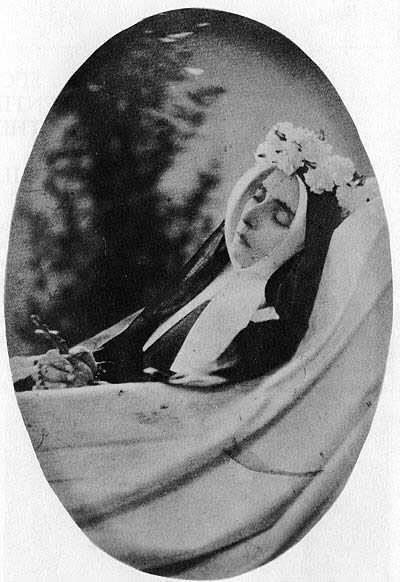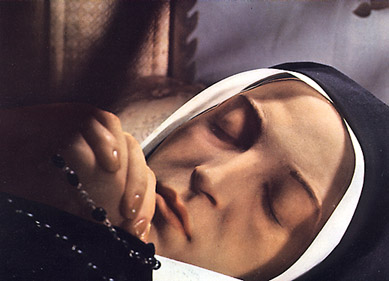on the resurgence of the Latin Mass ever written. The reporter gets most details right and he even exposes the problems with the Novus Ordo Missae (the new-new Mass hatched circa 1968.)
JOEY REISTROFFER, For The Herald-Journal
Published January 13, 2007
The Latin Mass is not dead. It has just taken a long sabbatical. It fell a bit out of favor right after Vatican II in the 1960s. Now it is back.
That road back, however, has been long and twisting. Some, such as the St. Pius X group, even broke away from the Catholic Church to celebrate the Mass their way. That gave the Latin service a black eye.
"It's not the norm today," said Stephen Gajdosik, director of media relations for the Diocese of Charleston.The Tridentine Latin Mass had been the celebrated service of the Catholic Church since the Council of Trent approved it in the mid-1500s. Then, in the 1960s, church leaders supported a service prayed in the vernacular. When the Novus Ordo -- Mass said in the language of a particular country or culture -- became established, the Tridentine Mass fell out of favor.
Nevertheless, Gajdosik said, the Society of St. Peter kept those Latin prayers alive. "Now it is growing in popularity," he said. "There is a resurgence."
The diocese, Gajdosik said, supports that interest.
 "It allows it where pastors request it, but it does not promote it," he said.
"It allows it where pastors request it, but it does not promote it," he said.
Father Lawrence McInerny, pastor of the Stella Maris parish on Sullivan's Island, asked and was granted permission to perform the Latin Mass. The service has taken root, and word has spread.
More interest was shown at Prince of Peace in Taylors. Father Steven Brovey, the diocesan director of divine worship and pastor at Prince of Peace, went down to Stella Maris for some Latin Mass training, and now he performs a Tridentine service in Taylors on Sunday afternoons.
Steve and Aimee Miller of Spartanburg said they try to take their family to a Latin service at least once a month.
"It's such a beautiful Mass," Aimee said. She said she is amazed by "the reverence of it."
The priest faces the Crucifix and the Tabernacle.
"He's facing God," she said. "We are all offering ourselves, with the priest, to God." During the Latin Mass, Aimee said, "the prayers are so engaging, you feel a strong spiritual connection to God in heaven."
While the priest says the prayers in Latin, the Millers can follow along in their missal in English. During the consecration, those prayers are said quietly by the priest, and the atmosphere becomes solemn, holy.
"The silence adds to the solemnity and the reverence of the Mass," agreed Lori Dorchak of Greer. Prayer has a chance to blossom in that silence, she said.
She said the Latin Mass has brought her husband, Jim, and their family closer together in the study of their faith.
"You have to watch carefully. A lot of it is not heard. You follow along and pray," Dorchak said. "It's not meant to be easy."
When the family began attending the Latin service at Prince of Peace, Dorchak said the Mass was a challenge.
"It threw me at first. But my husband loved it so much that I had to sink or swim."
She chose to swim by referring to The Catechism of the Catholic Church and studying her Catholic beliefs. Her family joined her in that study.
 "It's not always touchy, feely. It's not about people. It's about God. It brings you up to God," Dorchak said.
"It's not always touchy, feely. It's not about people. It's about God. It brings you up to God," Dorchak said.
She said her family was awed by the pageantry of the Latin Mass, with its incense, bells and even all the altar boys who are allowed to serve.
"We've had 17 altar boys at one Mass," Dorchak said.
She said her family is drawn to the reverence and depth of the service.
Aimee Miller said the Tridentine Mass goes way beyond the Novus Ordo. Dorchak agrees.
"The old prayers are very deep and meaningful, and a lot of it has been left behind by the Novus Ordo," she said.
The Dorchak said they prefer the Latin Mass. They see it as a return to the traditions of the church.
No, the Latin Mass is not dead. Instead, it is being resurrected by believers like the Millers and the Dorchaks, who want a fuller measure and understanding of their faith.



























